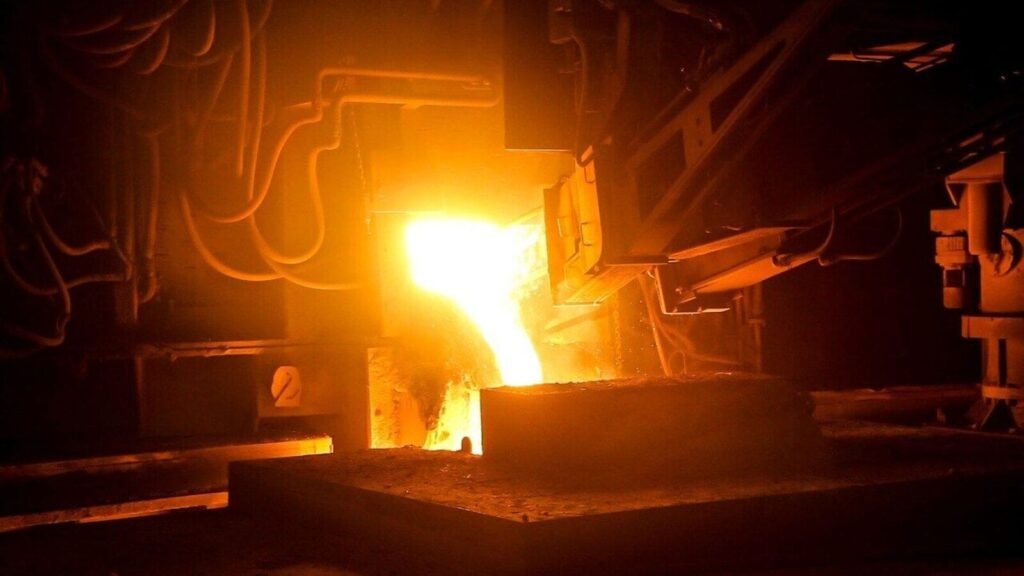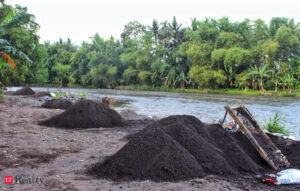India gears up for national green steel mission as demand surges

The Centre is preparing to launch a mission on green steel by the end of 2024, as part of its efforts to drive more sustainable steel production in India, Sandeep Poundrik, secretary, ministry of steel, said on Thursday. The initiative, modelled on the National Green Hydrogen Mission, will incentivize industry players to scale up green steel output.
The move comes amid mounting pressure on countries to cut carbon footprint in manufacturing, notably a move by the European Union to impose a 25% ‘carbon tax’ on its imports of steel and aluminium among other goods.
Speaking at an event in the national capital, Poundrik shared that a formal definition for green steel is expected by the end of October, laying the groundwork for the mission’s potential rollout by December.
A key aspect of the mission will focus on increasing the share of green steel in government procurement. “Right now, say, 10% to 20% of steel which is procured by government entities may be in the green steel bracket. But it may increase in coming years as the green steel production increases,” Poundrik said.
To support this shift, the government may consider reallocating unused funds from the earlier production-linked incentive (PLI) scheme for specialty steel. With approximately ₹3,000 crore left unutilized from the scheme’s original ₹6,322 crore outlay, these funds could be redirected to incentivize green steel production, subject to necessary approvals.
“If the competent authority approves, we would like to use some part of that to provide incentives to companies,” Poundrik added.
In September 2023, Mint had reported that the government was considering a “PLI 2.0” scheme to channel these unused funds towards green steel.
National policies under review
As India’s steel consumption continues to surge, fuelled by rapid economic growth, the government is also revisiting its National Steel Policy from 2017 and the Steel Scrap Policy introduced in 2019. Expanding green steel capacity is now at the forefront of the ministry’s priorities.
“(The 2017 policy) projected that India’s capacity requirement by 2030 will be around 300 million tonnes. Right now, we are about 180 million tonnes. But what we are seeing that the demand or the consumption of steel in India is growing very fast as compared to other economies,” the secretary said.
“(W)e are already reviewing the 2017 policy. And our preliminary estimates say that the steel demand perhaps will be more than what we predicted in 2030,” Poundrik said.
The ministry is also addressing implementation challenges within the steel scrapping policy, particularly in the unorganized sector.
“There are certain issues in the implementation of the policy. For example, there is an unorganized sector which takes a lot of the steel scraps and uses it again. So, we will have to remove the implementation issues in the policy,” Poundrik said.
These planned initiatives underscore the government’s commitment to fostering a greener, more sustainable steel industry in India, while meeting the rising demand for steel.
=====================================
The Centre will implement a national green steel mission by the end of the calendar year 2024, said steel secretary Sandeep Poundrik, by incentivising the industry to produce more green steel.
Speaking at an event in the national capital, Poundrik said the national green steel mission, similar to the government’s national green hydrogen mission, is likely to be launched by December, and that the ministry will have a clear definition for green steel ready by the end of October.
“…by October, we aim to define green steel. Then we are also coming with a green steel mission for the country. So, on the lines of green hydrogen mission, we are planning to have a green steel mission…we hope to have this green steel vision in place by December,” the steel secretary said when asked about the various initiatives currently in the works to address the need for green steel.
Under the mission, the government will add more green steel to it’s procurement mix, Poundrik said. “Right now, say 10% to 20% of steel which is procured by government entities may be in the green steel bracket. But it may increase in coming years as the green steel production increases,” he said.
The government may also use leftover funds from the past production-linked incentive (PLI) scheme for specialty steel in the new green steel mission, he said. The specialty steel PLI had an outlay of about ₹6,322 crore, and parts of it were left unused.
“…we had a PLI on speciality steel. We have roughly 3,000 odd crores (in rupees) available in that PLI (scheme). If the competent authority approves, we would like to use some part of that to provide incentives to companies,” Poundrik said.
Mint reported in September 2023 that the central government was planning a “PLI 2.0” for the unused funds under the specialty steel PLI.
The government is also reworking the national steel policy of 2017, and the steel scrapping policy of 2019, said Poundrik, adding that production of green steel in the country is the top priority for his ministry.
“In 2017, Government of India did come out with a policy, a steel policy, which projected that India’s capacity requirement by 2030 will be around 300 million tons. Right now, we are about 180 million tons. But what we are seeing that the demand or the consumption of steel in India is growing very fast as compared to other economies,” the steel secretary said.
“In fact, I think we are the only major economy with a very high growth rate of steel consumption. And to cater to that, we will need more capacity in coming years. And we are already reviewing the 2017 policy. And our preliminary estimates say that the steel demand perhaps will be more than what we predicted in 2030,” Poundrik said, adding that steel capacity expansion will happen as a result of demand expansion.
When asked about the scrapping policy for steel, Poundrik indicated that there were issues within the policy, and that the minsitry was reworking it to solve issued related to the massive unorganised sector of steel scrapping.
“…we have had a scrap policy, as you are aware, to make more scrap available. There are certain issues in the implementation of the policy. For example, there is an unorganized sector which takes a lot of the steel scraps and uses it again. So, we will have to remove the implementation issues in the policy to get more scrap. We are already reviewing the scrap policy and trying to remove the implementation gaps in the policy so that more scrap may be available domestically,” Poundrik said.
Catch all the Industry News, Banking News and Updates on Live Mint. Download The Mint News App to get Daily Market Updates.
MoreLess








